Fishing Soft Plastics for Trout
Small crappie tubes and shad-style baits work extremely well on trout, have a number of benefits, and come in every color under the sun.
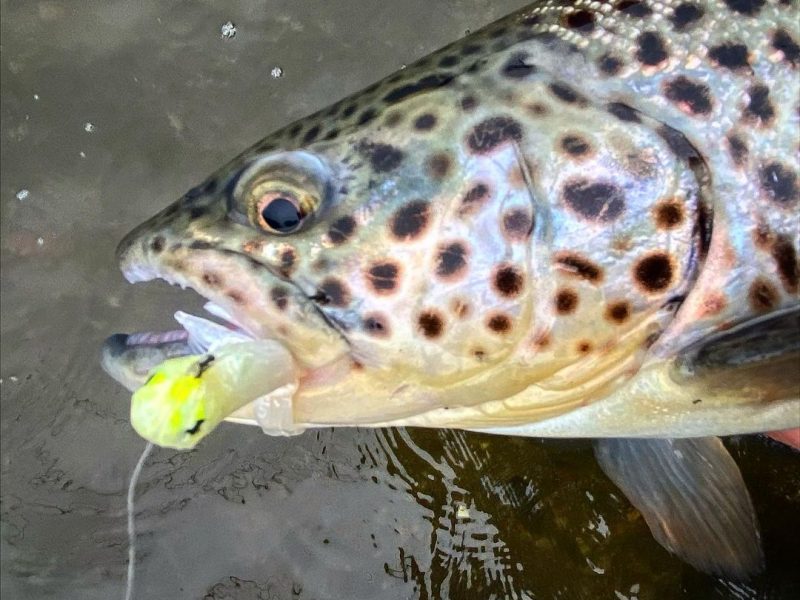
I started fishing crappie lures for springtime trout about ten years ago. Before that, I fished with standard trout gear: I cast spoons, trolled stickbaits, and flung flies. All of those techniques worked, but I’ve found that the benefits of soft plastics outweigh all other options. Using soft plastics for trout will work all year, even through the ice. They catch rainbows, browns, brookies, and tigers, in ponds, lakes, rivers, and streams and are effective from shore or from any size boat.
(Note: On The Water is reader-supported. When you buy through links on our site, we may earn an affiliate commission.)
My first foray into soft plastics for trout consisted of a 1/16-ounce ballhead jig shoved inside a 2-inch tube. These days, I prefer the Bass Pro Shops’ 2-inch Squirmin’ Squirts trimmed down to 1.5 inches, but any small crappie tube will work.
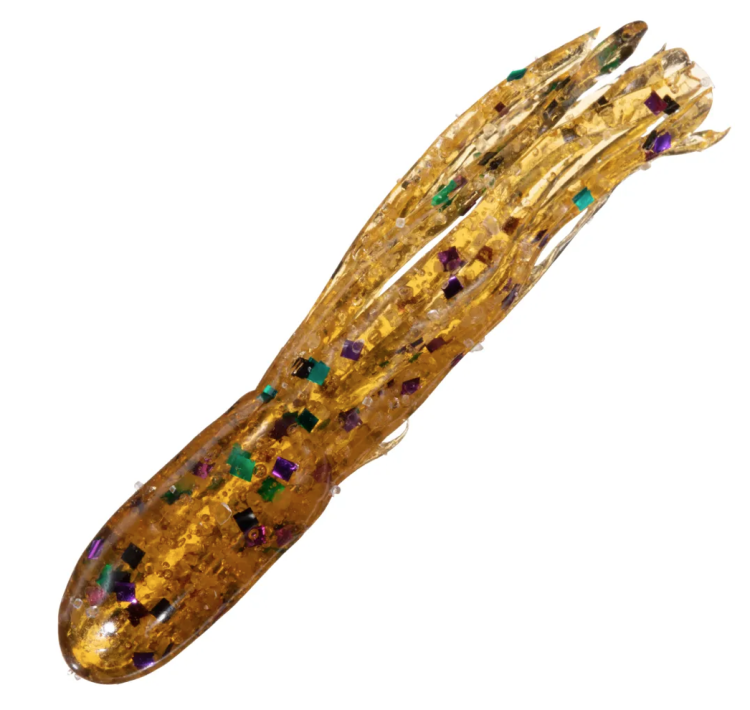
The advantage of slightly trimming the skirt or tail is that light-biting trout will often nip at the rear of the bait and avoid the hook. The reason for using the 2-inch size and trimming it (rather than purchasing the 1.5-inch size) is that you can squeeze a 1/16-ounce ballhead jig inside without tearing the tube. A light tube jig will slide in more easily, but it will also be more likely to spin on the retrieve. I’ve found these very light tubeheads are well suited to vertical jigging or ice fishing, but ballhead jigs work better when casting and retrieving.
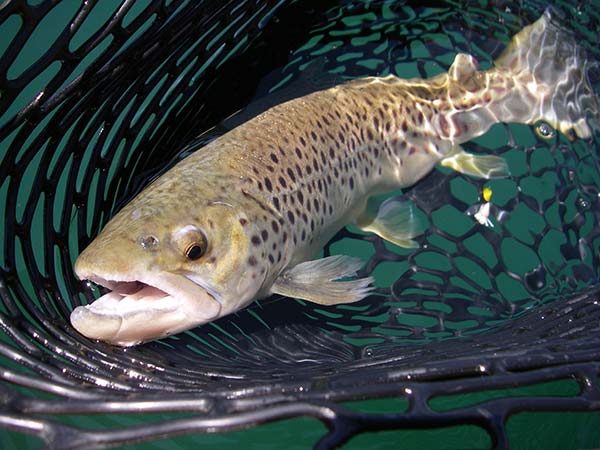
As far as color goes, it’s hard to go wrong with white or any combination that includes white. In general, brown trout seem to prefer yellow and white, rainbows tend to prefer pink and white, and brookies like solid white, but there are no hard rules.
During low light conditions or in stained water, I will use a brighter color or black with chartreuse. I haven’t found a bad color, but some definitely work better for certain species, certain waters, or under certain conditions, so experiment until the fish eat. Crappie fishermen are very opinionated about color, so there are a ton of options available.
A secret to getting consistent bites when the fish are finicky is to add a small piece of garden worm. I’ve experimented with all kinds of baits, including some oddball stuff such as tiny squid strips, but trout seem to prefer the worms sold in most tackle shops. You need only a small piece of worm, about 1 inch, for some added attraction. If the piece is too long, the trout may steal the worm and miss the hook entirely. Another option, which works almost as well, is a small piece of Berkley Gulp trout worm.
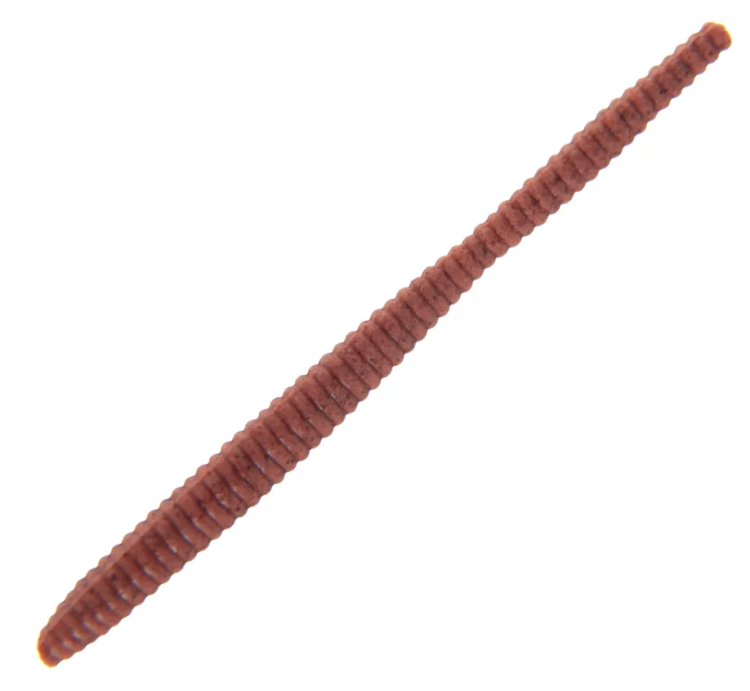
I cut about 1.5 inches from the tail of one of these scented worms, thread it onto the shank of the jighead, and glue it to the shank.
Recently, I’ve discovered another crappie bait that is a trout killer, the Bobby Garland Baby Shad. It’s a popular crappie lure in the South, but I haven’t seen many people fishing it in the Northeast, and certainly not for trout. It reminds me of the Berkley PowerBait trout worms I’ve used.
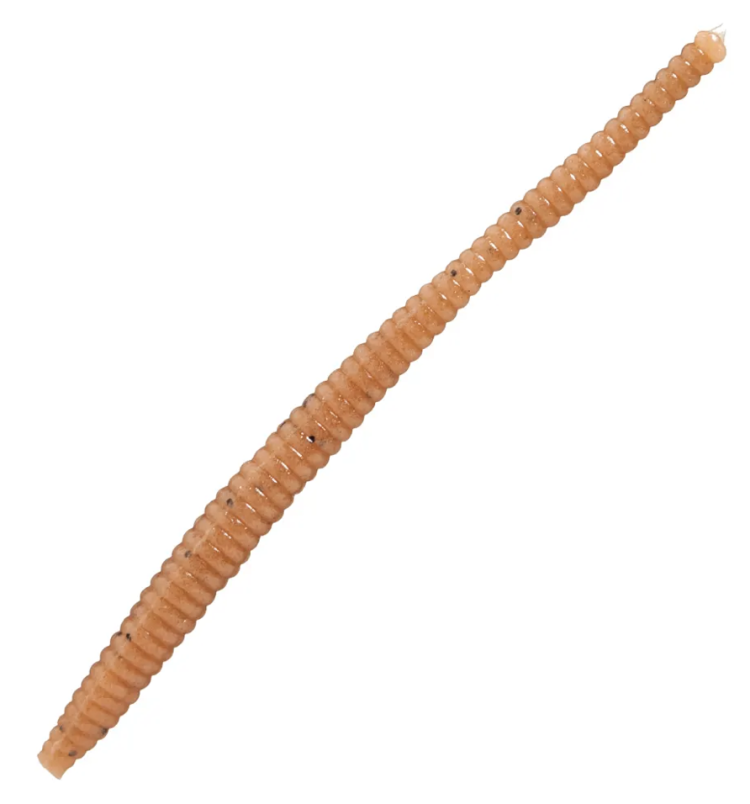
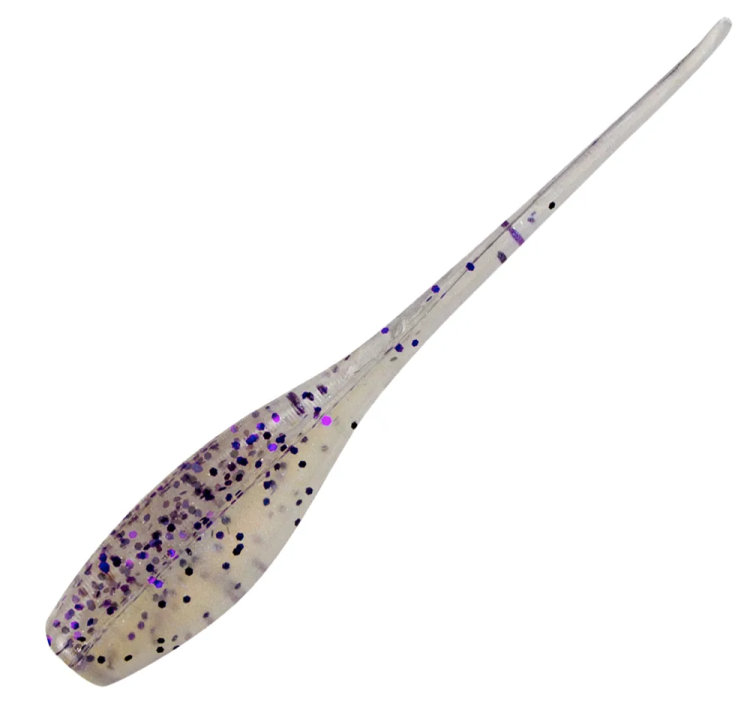
It has a fishy profile and a super-soft, long, skinny tail that moves and shakes in the water with the slightest twitch. Despite being soft, it’s surprisingly durable. With the integrated tail, I haven’t found it necessary to tip the bait at all, so I can leave the real worms at home. I put some Berkley Trout Scent on the bait, and that seems to be enough to seal the deal with finicky fish. Again, since it is a crappie bait, there are a ton of color choices. I prefer another variation of white with the strange name “Monkey Milk.” It seems to work in all conditions, so I usually have at least one rod rigged with that color to start.
How to Fish Soft Plastics for Trout
My favorite way to fish soft plastics for trout is to cast to rising fish on a calm day. They remind me of stripers sipping bait off the surface, and it’s fun to sight-fish for them. Don’t worry about matching the hatch, as even selective trout will hit a well-placed plastic.
The key is to lead the fish; don’t cast over them or they will spook. You can learn a great deal just by watching the fish without casting. Note the locations of the rises and the direction of travel, then try to get the tube to land just a foot or two in front of them. It’s challenging, but the fish will let you know when you’re doing it correctly. Once the jig touches down, I let it fall a few feet and then swim it with small hops, up near the surface. Watch the line to see if it “jumps” or if your jig hits bottom before it should. If the trout don’t take it on the initial fall, they’ll usually grab it in the first few feet. If I can get them to turn toward the bait, I can usually hook them; otherwise, it’s time to look for another rise.
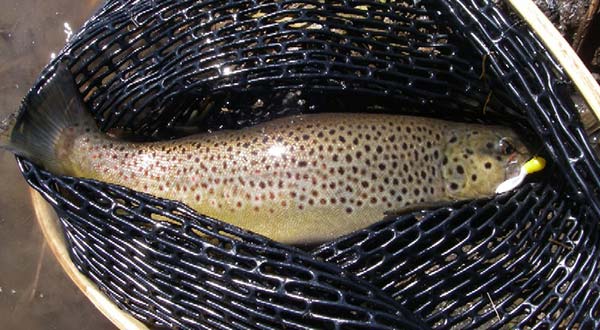
If no fish are rising, which is the most common situation I encounter, the best presentation by far is “low and slow.” I’ll make a long cast and let the jig drop to the bottom. Next, I will hop it or swim it along the bottom with frequent pauses, allowing it to touch down every few yards, but not letting it rest on the bottom. Trout will usually attack the bait from behind as it’s swimming or catch it on the drop. If the fish are really fired up, you can also catch them by working the tube fast, almost like a jerkbait, with sharp snaps and a quick retrieve with only brief pauses. This is a fun way to fish because the trout will smash the tube on the strike.
If the trout are really in a funk, you can try fishing vertically for them. The idea is to suspend the bait in front of inactive fish. The motion of the boat will add a subtle action, and the trout will take the bait as it hangs nearly motionless. Use a double line knot, such as the double-line clinch, to attach your jig, and push the knot back on the hook eye toward the hook bend. This little trick will allow the plastic to hang horizontally, instead of at a 45-degree angle, though you might need to re-adjust the knot after each fish.
Trout Tackle
For gear, I like fast-action, 6- to 7-foot, ultralight rods that can launch a 1/16-ounce jighead and soft plastic a good distance.
For line, light is the only way to go. You will get more distance and many more bites with 4-pound-test line than with 8-pound-test. Lately, I’ve been using 4-pound-test Berkley Trilene XL Smooth Casting monofilament, and attaching a 5-foot leader of 4-pound-test Berkley Vanish fluorocarbon with an Albright special knot. (I glue all my knots with a tiny drop of Gorilla Glue Super Glue.) If the fishing is tough, I will drop down to 2-pound-test monofilament mainline and tie direct.
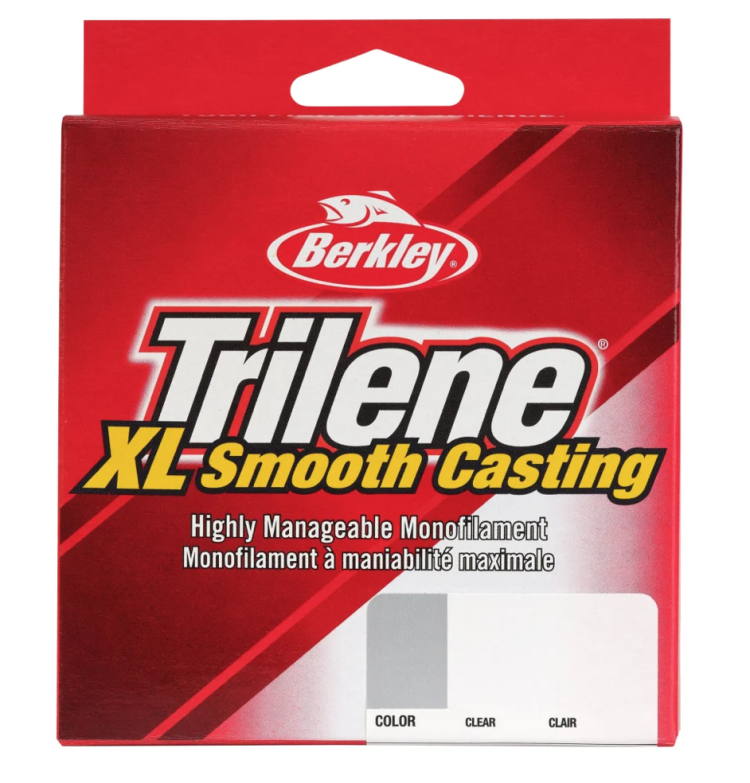
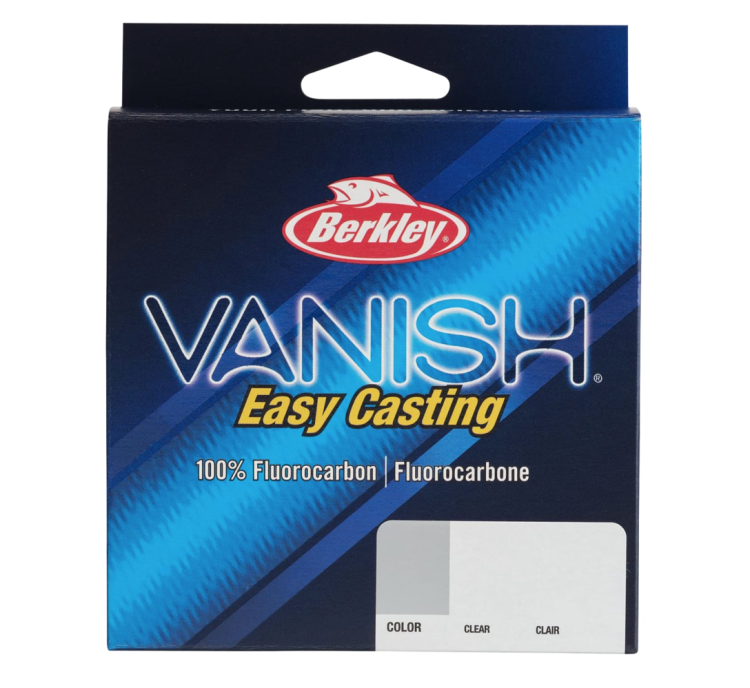
For reels, I like to use a 1000 size spinning reel that balances the rod. Casting distance and a smooth drag are more important than any other details, such as a particular brand. A cheap reel will give you tangles, lost fish, and headaches, so it’s better (and cheaper in the long run) to invest in quality gear that lasts.
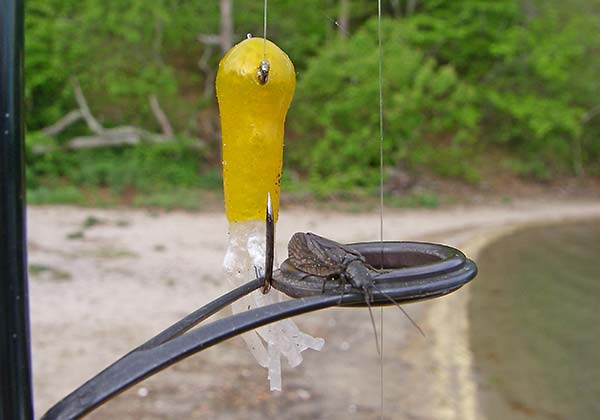
I fish primarily in New Hampshire and Massachusetts, so I buy non-lead jigheads to comply with state regulations. Be careful when buying jigheads online or even at local stores, because many retailers are still selling lead versions that are illegal to use. That said, it’s not so hard to find a non-lead jighead anymore, but the hard part is finding a good one with a decent hook. The best ones that I’ve found are the 1/16-ounce ballhead jigheads made by leadfreejigheads.com. The size 4 Matzuo sickle hooks are sharp and hold well. I will occasionally touch up the hook points with a hook file, if needed, but they hold a point well.
Why Use Soft Plastics for Trout?
In addition to being very effective, there are a number of benefits to catching trout on soft plastics. Most of the time, I am fishing from a kayak or wading, and I find unhooking trout to be much easier on me (and the fish) with a single hook instead of a treble. If you’re using a net, the trout will slide right in and won’t get hopelessly tangled as they do their alligator death-roll routine.
The trout release very well after removing a single hook, so you can choose which fish you’d like to keep, if any. With some forceps or even your bare hand, you can grab the jig with the trout still in the water to release it. With no handling and a single small hook hole, it will swim off every time. I only like to eat fresh fish, so I only keep what my wife and I can eat for dinner that day. I also only keep rainbows, since they are the most common, and I let the browns, brookies, and tigers go so they can get bigger. That’s just my personal preference, but the point is that it’s easy to practice selective harvest with a single hook on a jighead.
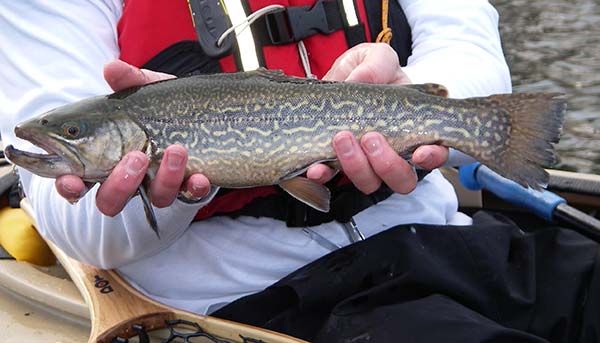
There are only two instances when crappie soft plastics are less effective. The biggest enemy to a 1/16-ounce lure of any kind, is wind. I can usually find an area to fish in the lee, but it might be a very small percentage of the whole pond. You can extend your range a little just by keeping the wind at your back. This works up to the point where the wind catches your line, puts a belly in it, and raises your jig up too high or forces you to retrieve too quickly. Another option to deal with wind is to fish from a boat with a drift sock and to slow-troll the plastics, giving them a little twitch every so often. The other time soft plastics aren’t a good choice is at night. The crappie soft plastics that I fish for trout don’t work as well after dark as other baits. I’m not sure why, but I assume the trout have a harder time seeing them at night.
Next time you go trout fishing, bring some crappie soft plastics with you. They are the most fun, effective, and easy-to-fish lures that I’ve tried for trout. Small crappie tubes and shad-style baits work extremely well on trout, have a number of benefits, and come in every color under the sun. Pick some up and experiment to see what works best for the fish near you.
Related Content
The Best Spoons for Trout Fishing
9 on “Fishing Soft Plastics for Trout”
-
Oswaldo Great read. TY
-
Mike You can find all of “J.D. Parsons” fishing reports on http://www.NewEnglandFishing.net under the screen name JigMaster5.
-
Greg W Great article,
As a young kid using time old trial and error I descovered that soft plastic curly tail jigs worked great on the wild brook trout of the white mountains. Since I have used many soft plastic in my persuit for trout.
If your not a purist (personally I both enjoy casting a dry flys and spinning gear) try this trolling technique for rainbows and browns.
Rigg soft plastic tube with ball headed jig. Next pack 1/2 the remaining open space of the tube with power bait. Finally troll tube giving small bumping action not just for lure action but to help dispersal of the power bait sent leaving a sent trail behind the tube. -
divebuss nice read jon, see ya on the water, i’ll be using your old 2500
rick -
J.D. Parsons Thanks for running my article on your website. I hope it helps a few people catch more trout this year. Looking forward to Spring and catching some more trout myself!
-
RF Bobby Good read for my 11-year-old grandson who could fish every day of his life
-
Famjr The two different ways I fish for trout at night with plastics is with a glow in the dark jig with a matching 2″ glow curlytail sometimes on an inline Colorado blade spinner snap (you can jerryrig one at home with 2 swivels & 2 split rings with the blade in the middle ring linking the swivels, this is an old OLD timey homejobbie trout/salmon spinner rig), and other way is putting the plastic tube/grub/trout-magnet on a #0 or 1 Mepp’s spinner combo rig like the old discontinued Comets (I just checked and Mepp’s still offers the combo style in their Black Fury line). You want to go with Colorado or French blades for the strong thump to help the trout home in on the plastics.
-
Ray Hooks, What type and size hooks should I use with these plastics? Thanks
-
Jeff Lawver I too use soft plastics for trout, especially crappie size tubes. They work great on streams
drifting them below a small float. Even giant Great Lakes Browns and Steelhead will take them in tributaries.
Leave a Reply